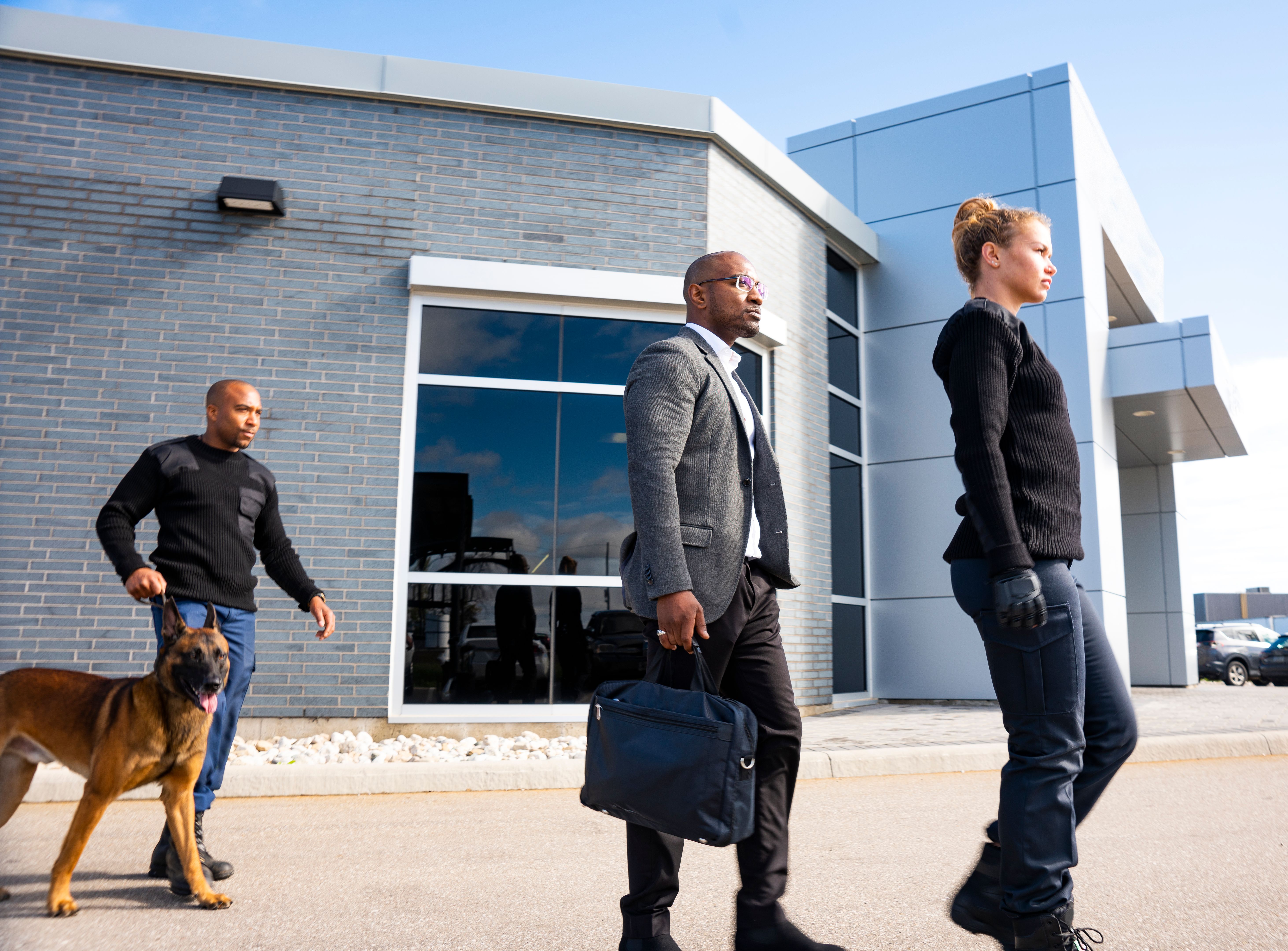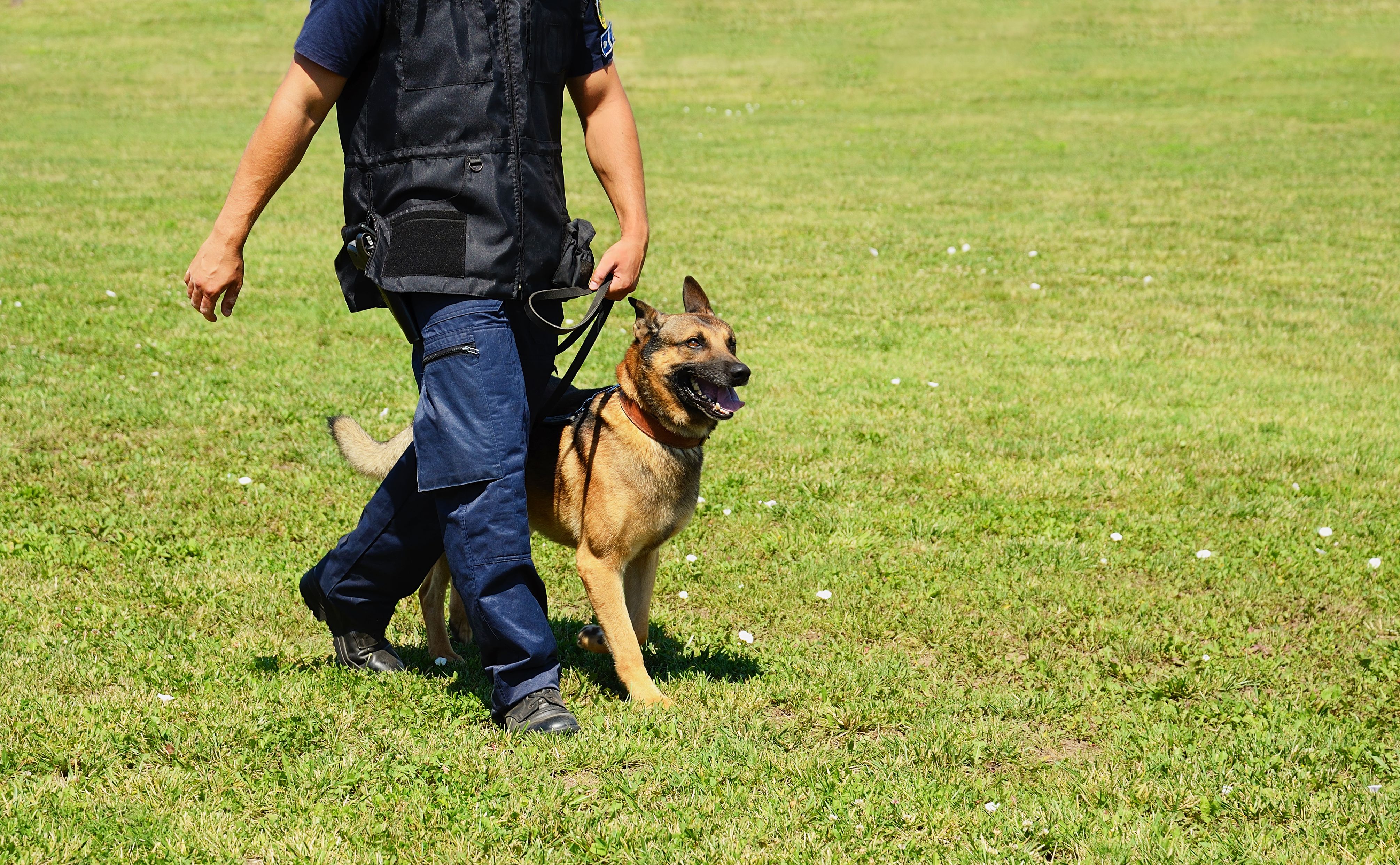Integrating K9 Units into Executive Protection: Enhancing Security and Efficiency
How K9 Security Teams Integrate With Executive Protection Details
In the world of executive protection, one reality never changes: time, distance, and control decide outcomes. As threats evolve, faster, closer, more adaptive, technology alone isn’t enough. Firearms are increasingly restricted, carry heavy legal and optic risks, and hostile actors learn to exploit the gaps. That’s why the integration of K9 units into security details is no longer a novelty, but an inevitability.
A trained K9 team shifts the timeline left, providing early warning, deterrence, and behavioral control that no other tool can replicate.

More Than Dogs on Patrol
When most people think of K9 units, they picture gate guards or static patrols. In reality, a modern K9 integrated with an EP detail is not a mascot or a backup plan — it’s a mobile sensor, a psychological lever, and a deterrent that changes behavior before a problem even begins.
A dog’s nose can outperform the most sophisticated machines at detecting explosives, firearms residue, or contraband. Despite decades of research into electronic sensors, no technology has yet surpassed the sensitivity and operational flexibility of the trained canine olfactory system for detecting explosives (NIH, 2021). But its true advantage is dual: physical detection plus psychological disruption. At 15–20 feet, posture shifts. Hands come out of pockets. Eyes drop. Crowds self-sort. That’s compliance without conflict — and the best solution to a problem is the one prevented before it ever happens.
Where Guns Can’t Go
International operations often limit firearms. Even domestically, principals and their families increasingly prefer a low-optic presence at estates, offices, or events. A K9 fills that gap — non-lethal, policy-compliant, and quietly effective.
Where guns escalate, dogs de-escalate. Where cameras only record, dogs change behavior in real time. A firearm is a last resort that can trigger headlines; a camera documents what already went wrong. A trained K9, by contrast, prevents the disruption altogether, extending the protective bubble without drawing attention.
This matters in today’s environment. Clients want security that is invisible until it counts, insurers want solutions that reduce liability without raising risk, and principals want to live without feeling policed. The K9 uniquely satisfies all three: a silent sensor, a living deterrent, and a visible symbol of preparedness that requires no explanation.

Rings of Protection
Think of EP as layered rings: long-term counter-surveillance, medium-range early warning, short-range logistics, and last-second disruption. A K9 expands each ring.
- Long Ring: Random sweeps and presence make hostile reconnaissance noisy and risky.
- Medium Ring: Odor/stress detection adds minutes of warning at choke points.
- Short Ring: At the vehicle, elevator, or entry, a handler and dog form a moving barrier that alters attacker calculus.
- Close-In: If deterrence fails, a bark or lunge breaks an assailant’s decision loop, buying the seconds needed for extraction.
Integration, Not Addition
The key is integration. K9 teams slot into an existing detail’s command and control structure, with reporting, cadence, and posture tuned to the principal’s culture. Sometimes that’s discreet — plainclothes, calm, and almost invisible. Sometimes it’s overt — visible deterrence at estate gates or event entries. Either way, the presence is the product.
The Direction of the Field
Threat tempo is up. Public incidents are faster, closer-in, and more unpredictable. Clients, insurers, and boards are no longer impressed by generic “armed presence.” They want early warning, liability reduction, and proof their investment is working. K9s meet that demand with auditable, policy-compliant outcomes.
But not all K9 programs are equal. A large portion of the market is built on lowest-bidder contracts—handlers treated as interchangeable, dogs deployed as little more than window dressing, and reporting designed to meet the bare minimum. You get the quality you pay for, and in high-threat environments that gap is exposed fast.
The future belongs to integrated systems: dogs that expand protective rings, handlers who operate as trained protection agents, and deliverables that hold weight in a boardroom as easily as they do under pressure in the field.
In short: dogs go where guns can’t, and they buy the time principals live on. Not every company can credibly say that. We can.